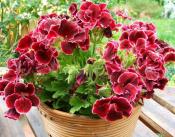Search
Login
How to properly install the gutter system of the house to remove atmospheric precipitation from the roof
The roof of any house is a place of collection of a fairly large amount of rainfall, therefore, an organized system for their removal is one of the very important tasks that need to be addressed when erecting structures of various types. Gutter systems are of two types: unorganized and organized. It is easy to guess by the name that the former have many shortcomings, they allow rainwater to flow arbitrarily, falling on the sidewalks, causing the destruction of the basement of the room and its foundation.
Content
- The benefits of organized drainage
- What materials are used in the arrangement of drainage systems
- Design video
- Installation of a drainage system video
The benefits of organized drainage
Lean owners usually plan organized drainage systems of the roof, which more reliably protect the foundation from moisture, and the building itself - it directly hits the facade of rainwater. This method of arranging gutter systems is more popular, as it prevents additional costs for maintaining the facade in proper form and interferes with the process of shrinkage of the structure.

Discharged to a certain distance from the building, water can, if necessary, be used to irrigate the garden or beds, and its excess can be discharged into a storm sewer or drainage system. A properly equipped drainage system, the profile of which is successfully combined in texture and color with the roofing material, is a decorative element that gives the building a complete, individual, elegant look.
What materials are used when installing the drainage system
In the construction market, the choice of materials for arranging gutters today is quite wide, the task is most likely to find not only the most beautiful, but also the most practical, reliable, durable one among this rich assortment. Although the material from which the roof is made has practically no effect on the installation of the drainage system, it is very desirable that both of these elements of the building are combined in color and texture, the ideal option is to stop at the choice of materials from one manufacturer.
The most common materials that are commonly used when installing drainage systems are metal and plastic PVC pipes.
- Galvanized steel coated with polymeric materials is resistant to corrosion, wear-resistant, not afraid of direct sunlight, has a fairly wide range of colors. Installation work from a material of this quality is quick and easy, they can be done independently. Good strength properties, the ability to withstand heavy loads created by snow and ice, moderate linear expansion with temperature changes, allow the use of such materials even in harsh climatic conditions. More expensive, copper gutters are reliable, have a long service life and are especially decorative, they are covered with patina during operation, their noble appearance gives a special charm to the whole building.
- PVC gutters are lightweight, non-corrosive, silent, able to restore their original shape after deformation. Sets of plastic gutters usually include structural elements with non-standard angles, the installation of gutter systems of houses with bay windows in their application can be greatly simplified. The color scheme is characterized by a variety of shades, prices are much lower than metal ones.
Design

Having decided on a material suitable for quality and cost, you can start calculating the drainage system. Operational qualities will subsequently depend on a competent approach to it. The following are taken into account:
- roof area
- her bias
- location and number of drain points needed,
- as well as the intensity of precipitation characteristic of the area. This data can be obtained by a detailed study of the building plan.
Designing involves the creation of a system that complies with the rules and regulations; it is carried out individually for each building. Installation of a drainage system will require special fasteners for walls and cornices.
In winter, there is a threat of ice congestion in the drain pipes. In this case, water overflows through the mash and forms icicles. To avoid this negative phenomenon, they resort to the installation of anti-icing systems based on heating cables. Ultimately, the cost of creating such a system is paid off by minimizing the cost of repairing the roof and gutters, operating costs are not large, since it only works if there is a risk of ice jams and icicles, and even then with minimal energy consumption. It is also recommended to plan the placement of vertical pipes on the sunny side of the structure.
Installation of a drainage system

The external gutter system consists of: a vertical pipe, a gutter and a funnel. It is necessary to comply with certain standards when installing the gutter system, the instruction warns that the slopes of the gutters are necessarily observed, they should be approximately 2-3 cm per linear meter. The number of drainpipes depends on the intensity of precipitation in the warm season.
The permissible length of the gutter from which one gutter will receive water is 10 m. The gutters are mounted along the eaves in the case of an open gutter system or on the roof along the parapets - with the inside. Under the condition of frequent heavy rainfall, it is more rational to use square pipes - they have a large throughput. In fact, the system is calculated taking into account the area of \u200b\u200bthe roof slopes, according to GOST.

Installation of the drainage system is carried out by fastening the pipes with clamps attached to the surface with galvanized metal pins or coated with an anti-corrosion compound.

Getting started should be guided by the following rules:
- Vertical drains are mounted at a distance of at least 5-7 mm from the wall.
- If the overhang of the cornice is extended to a greater distance, then the installation of transition elements, in particular, the knees, is provided.
- During assembly, the joints must be leakproof, while the joints are folded, glued. welding, rubber seals are used. Each of the connection methods has its drawbacks, for example, when using cold welding, there is a risk of cracking during mechanical deformation. It will take a lot of time to dismantle glued ones. The quality of rubber seals is threatened by sudden changes in ambient temperature.
When choosing a drain installation option, the characteristics of the materials used, the complexity and complexity of the assembly process itself should be taken into account. The work can be entrusted to specialists, but with a serious attitude to the issue, you can deal with it yourself.





